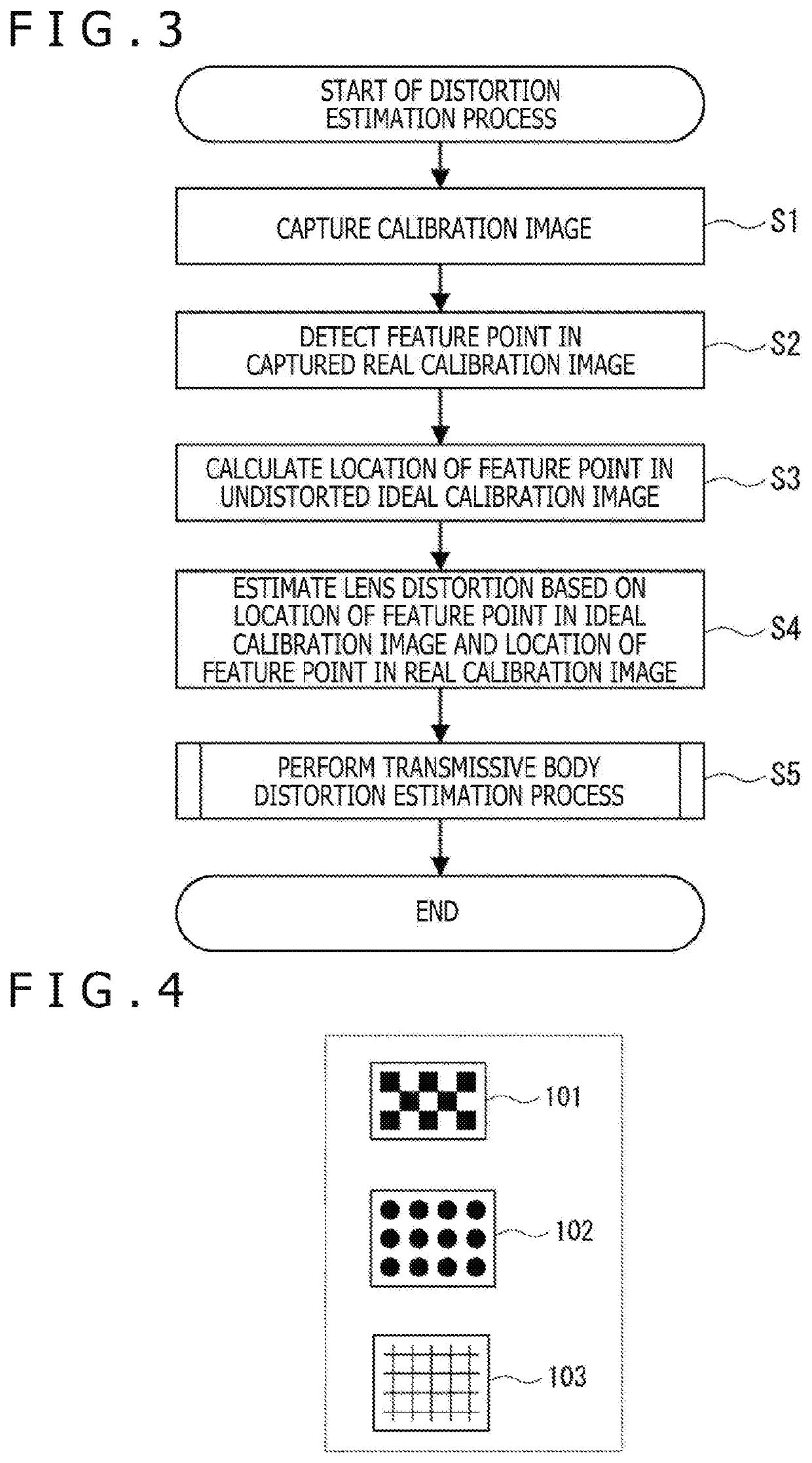Signal processing apparatus and signal processing method
a signal processing and signal processing technology, applied in image enhancement, image analysis, instruments, etc., can solve the problems of windshield distortion and lens distortion, and achieve the effect of easy estimation of image distortion
- Summary
- Abstract
- Description
- Claims
- Application Information
AI Technical Summary
Benefits of technology
Problems solved by technology
Method used
Image
Examples
first embodiment
1. First Embodiment
[0048]A first embodiment of the present technology will now be described with reference to FIGS. 1 to 10.
11>
[0049]FIG. 1 illustrates an example configuration of an image processing system 11 according to a first embodiment of the present technology.
[0050]The image processing system 11 captures an image of an object 13 through a transmissive body 12 disposed between the object 13 and the image processing system 11, and performs various processes by using the obtained image (hereinafter referred to as the captured image).
[0051]The transmissive body 12 is a transparent or translucent body that allows light to pass through, and includes, for example, a visor of a wearable device for AR (Augmented Reality) or VR (Virtual Reality) or a windshield of a vehicle. Light from the object 13 is transmitted through the transmissive body 12 and incident on a lens 21A of an imaging section 21.
[0052]It should be noted that the transmissive body 12 may be included in the image proc...
second embodiment
2. Second Embodiment
[0144]A second embodiment of the present technology will now be described with reference to FIGS. 11 to 14.
[0145]As compared with the first embodiment, the second embodiment reduces the amount of computation required for the distortion correction process, and thus increases the speed of processing.
201>
[0146]FIG. 11 illustrates an example configuration of an image processing system 201 according to the second embodiment of the present technology. It should be noted that elements depicted in FIG. 11 and corresponding to those in the image processing system 11 depicted in FIG. 1 are designated by the same reference symbols as the corresponding elements in FIG. 1, and in some cases will not be redundantly described.
[0147]The image processing system 201 differs from the image processing system 11 in that the former includes a signal processing section 211 instead of the signal processing section 22.
211>
[0148]FIG. 12 illustrates an example configuration of the signal p...
third embodiment
3. Third Embodiment
[0172]A third embodiment of the present technology will now be described with reference to FIGS. 15 to 18.
[0173]The first and second embodiments have been described in relation to processing that is performed in a case where the internal parameter (internal matrix K in Equation (1)) and external parameters (rotation component R in Equation (2) and translation component t in Equation (3)) of the imaging section 21 are known. Meanwhile, the third embodiment will be described in relation to processing that is performed in a case where the internal matrix K, the rotation component R, and the translation component t are unknown.
301>
[0174]FIG. 15 illustrate an example configuration of an image processing system 301 according to the third embodiment of the present technology. It should be noted that elements depicted in FIG. 15 and corresponding to those in the image processing system 201 depicted in FIG. 11 are designated by the same reference numerals as the correspond...
PUM
 Login to View More
Login to View More Abstract
Description
Claims
Application Information
 Login to View More
Login to View More - R&D
- Intellectual Property
- Life Sciences
- Materials
- Tech Scout
- Unparalleled Data Quality
- Higher Quality Content
- 60% Fewer Hallucinations
Browse by: Latest US Patents, China's latest patents, Technical Efficacy Thesaurus, Application Domain, Technology Topic, Popular Technical Reports.
© 2025 PatSnap. All rights reserved.Legal|Privacy policy|Modern Slavery Act Transparency Statement|Sitemap|About US| Contact US: help@patsnap.com



